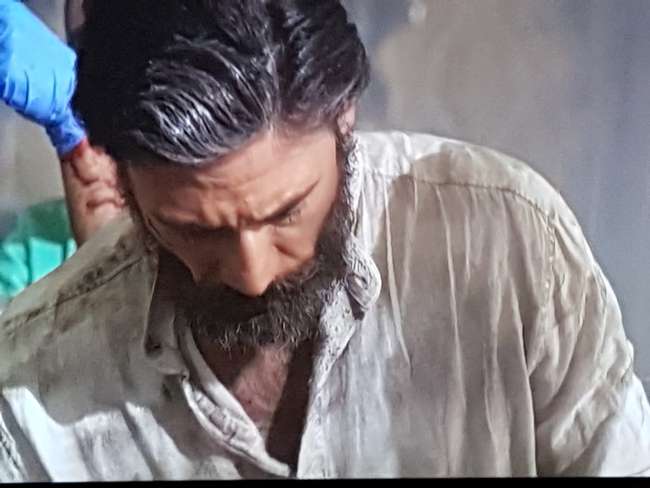Don Curry and Apostle Thomas
Published: 06.02.2017
Subscribe to Newsletter
Don Curry sometimes wonders what traveling was like in earlier times, when there were no package tours and you couldn't just book a Toyota Innova with a driver. Traveling in the past was certainly anything but a pleasant activity: it was uncomfortable, unpredictable, and dangerous. Those who embarked on a journey could never be sure if they would ever return. Great travelers of an early era include the apostles. Many of them traveled quite far, especially Paul, who was constantly on the move; but also Peter, who at least traveled to Rome, or James, who ventured as far as the westernmost part of Spain as a corpse. However, Thomas traveled the farthest of all the apostles. He arrived in India in 52 AD (see Day 16) and was to stay there until the end of his life. Today, Don Curry wanted to follow in his footsteps.
The breakfast buffet at the INDeco Hotel did not earn any special points, it simply offered the usual mediocrity. Before this disappointing experience, Don Curry enjoyed a short walk to the beach, which was still crowded with many participants of a festival from the previous day. Some people went into the sea fully clothed, whether to cool off, wake up, replace the shower, or for religious reasons, Don Curry couldn't decide. However, in the background, the silhouette of the ancient Shore Temples formed a photogenic scene, but Don Curry could not enter them from the coast as their grounds were fenced off.
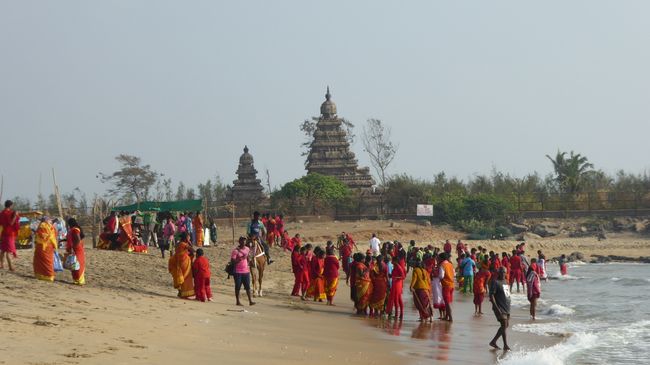
At 9:00 a.m., Prince was ready to transport Don Curry to Chennai, formerly known as Madras. The distance was only about 50 km, but as the fourth largest city in India, Chennai could always afford a full-blown traffic chaos. Consequently, the journey to St. Thomas Mount, a hill where Apostle Thomas is said to have been killed by a Hindu priest with a spear from behind in 72 AD, took a long time. 134 steps lead up to this hill, and given the lush temperatures in the city of millions, the ascent took on the dimensions of a late but vigorous morning exercise. In a small chapel on the hill, not only relics of the apostle were kept, but also an old stone cross that Thomas himself found and excavated there, as well as a portrait of Mary by the evangelist Luke. In addition, from up here, there was a fantastic view of the southern part of the 7-million-city.
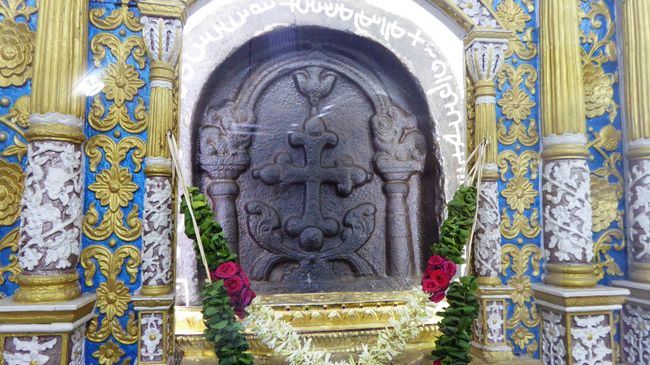
But Don Curry still wanted to visit another destination in Chennai, the Thomas Basilica, which was built on the original tomb of the apostle and still serves as an important pilgrimage site today. However, the present-day snow-white building in Neo-Gothic style is only 120 years old. While Don Curry sat in the church and absorbed the atmosphere of this place, a friendly local of about the same age approached him. Don Curry was already considering how much rupees he wanted to give him when he realized that the other person was simply interested in a nice conversation. Not everyone sees tourists only as walking wallets, but actually also as guests they want to welcome. Don Curry gratefully accepted this correction of his one-sided perspective.
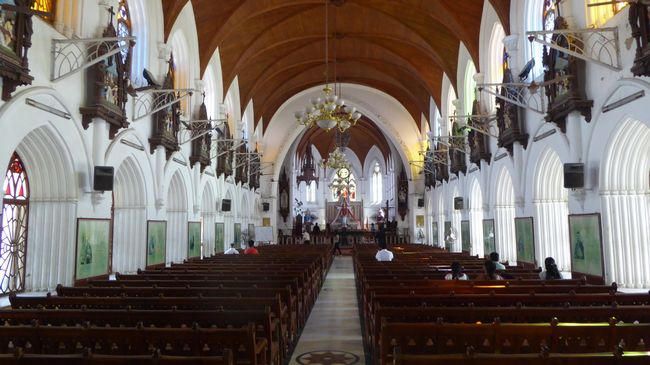
The tomb of the apostle itself is located below the altar area of the basilica; a small opening in the floor allows for a limited view. The actual entrance was created from an annex of the church. Here, one first leaves their shoes, descends a staircase to an antechamber where life-size depictions of the apostle's death are displayed, and finally reaches the crypt through a long corridor. Here, in a simple glass coffin, lies a figure of the dead Thomas as a relatively young man. In fact, the bones of the apostle were transported to the territory of present-day Georgia early on, from where Crusaders mostly brought most of them to Italy. Only a few bone fragments are said to have remained here at this spot. But these mundane facts do not detract from the worship by the population. Don Curry observed many Indians kneeling in front of the glass coffin and briefly touching it. For them, this is still THE Thomas' tomb and therefore the holiest Christian place in India.
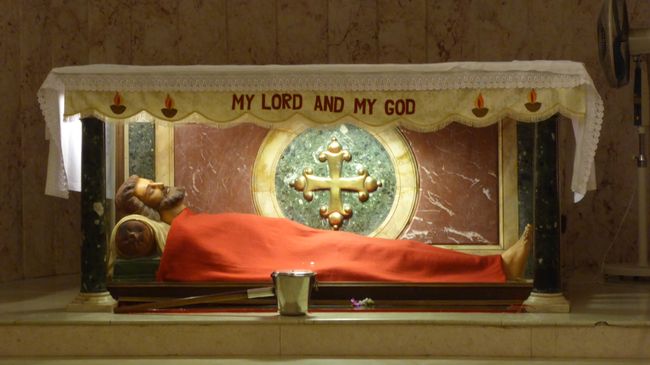
After this very time-consuming visit to the city, it was now time to return to Mamallapuram. Prince told Don Curry what he found most fascinating and beautiful in Chennai: an interchange in the shape of a lotus flower on the expressway; he was very sorry that we wouldn't pass by there. But Don Curry was not in the mood for modern infrastructure projects, but rather for historic places or culminating points of Indian culture. His next destination belonged to the latter: DakshinaChitra, a kind of open-air museum of South Indian vernacular architecture and craftsmanship.
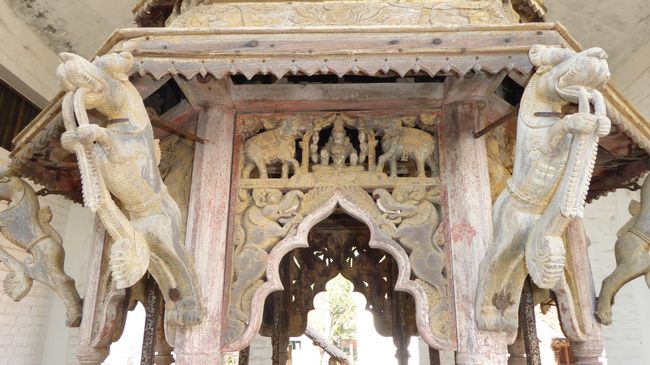
However, first and foremost, his stomach demanded its right - Don Curry had already planned to have lunch in the restaurant there anyway. What he didn't know was that the restaurant only offered a diverse menu of regional specialties on weekends. On other days, like today, you could only choose between a set thali (tray with various small dishes) or simply paratha bread with dips. Since Don Curry particularly loved the greasy, puff pastry-like parathas, he ordered two of them for the equivalent of €0.60. The breads quickly arrived in front of him, accompanied by a bowl of onion raita and a bowl of wonderfully spicy brown creamy vegetable sauce. When he asked the only waiter what kind of sauce it was, he simply received another bowl; and when he had almost finished that one, the waiter cheekily placed a third one on the table. However, Don Curry could only surrender, as the parathas, the raita, and especially the vegetable sauce had already satisfied him - together with 1 liter of water, the bill for his lunch amounted to €0.85, and he intended to give the friendly waiter a good tip.
Freshly strengthened, Don Curry now marched through Tamil Nadu, Kerala, Karnataka, and Andhra Pradesh, the most important states of South India. Each state has its own dedicated area on the premises, showing typical homes and workshops of the respective residents. From basket weaving to silk weaving to the production of musical instruments, the necessary techniques are presented and in some cases even demonstrated live. Many products can also be purchased on the spot. Don Curry would have liked to delve deeper into the cultural differences of the various states, but his schedule still had a lot more in store for today. However, the next destination, a crocodile park, was closed due to the day of rest.
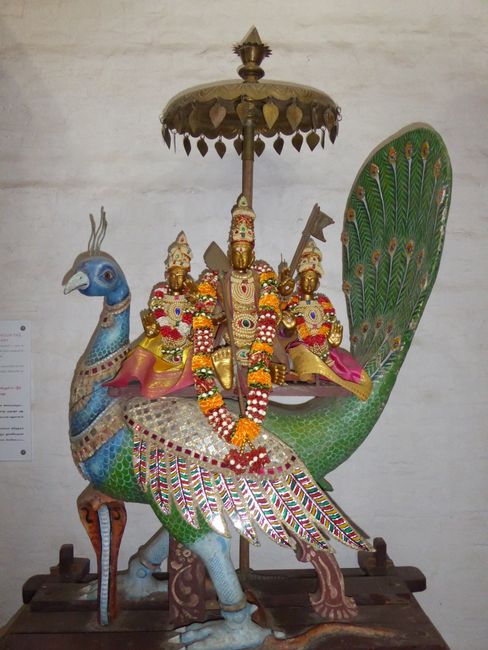
Therefore, it was directly on to the Tiger Cave, located on the northern edge of Mamallapuram. Hardly had Don Curry entered the fenced area when a young man approached him. Ah, the ticket seller, he thought, but the Indian didn't want to collect any money - at least not yet - instead, he wanted to show Don Curry the way to the cave and tell him something about its history: he had stumbled upon yet another guide. However, the friendly manner of the man and his eloquent English led to immediate acceptance.
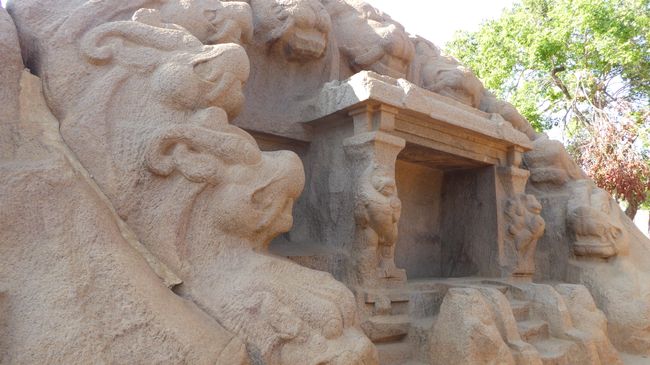
In reality, the Tiger Cave is not a cave at all, but a room artificially excavated into a mighty rock, whose frame is formed by seven huge tiger heads. This unusual ensemble, which was surely once life-like painted, probably served as a stage or magnificent backdrop for the thrones of the Pallava kings in the 7th/8th century. However, the guide had more to show: a towering rock once served as a primitive lighthouse; still visible footholds and grips in the rock show where guards climbed up to ignite a fire at the top at night. Even further, the terrible tsunami of 2004 had uncovered an ancient Shiva temple, also hewn into a rock during the Pallava period. When the guide wanted to visit more attractions in the area, Don Curry put on the brakes; after all, he still wanted to admire a lot in Mamallapuram. He quickly thanked the young man, paid part of the requested fee, and let Prince drive him to the Pancha Rathas in the south of Mamallapuram.
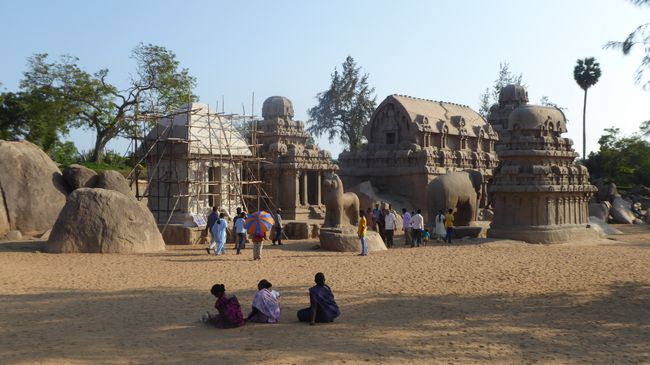
These five small temples standing side by side still puzzle researchers to this day. They were all carved out of a single giant rock, but in an increasingly intricate style. Some were never fully completed, and none of the temples show signs of actual use. Modern research now assumes that this was some kind of architectural experimentation field of the Pallava period, to test techniques and the effect of certain artistic details. Nevertheless, these buildings are among the most magnificent creations of Indian (early) medieval times. Just the life-sized elephant standing next to the temples, also sculpted from a single rock, is hardly surpassed in terms of attention to detail and grandeur. Although Don Curry had to share this place with crowds of tourists, he greatly enjoyed the magic of human craftsmanship from around 1300 years ago.
Many other works of art and buildings in Mamallapuram also date from the same era. For their exploration, Don Curry simply had Prince drop him off in the town center and enjoy his free time. He himself took time to explore the remaining legacies of the Pallava dynasty. Most of them are freely accessible in a park-like landscape and are connected to each other by short walking paths. Directly next to the road, a true landmark of 'old' India rises: a huge rock relief 30 m long and up to 14 m high, which is called 'Arjuna's Penance' and depicts hundreds of mythological figures, gods, and animals in a kind of picture story. Here, too, the artists thought not only of the big statements, but also of numerous unimportant but endearing details: the small elephants between the legs of their mothers or even a over 1200-year-old, perfectly smoothed stone slide that is still used by village children today. On the different paths, you pass by small temples or elaborately decorated rock caves, can climb up to a rather modern lighthouse, or simply admire the view over the tropical landscape.
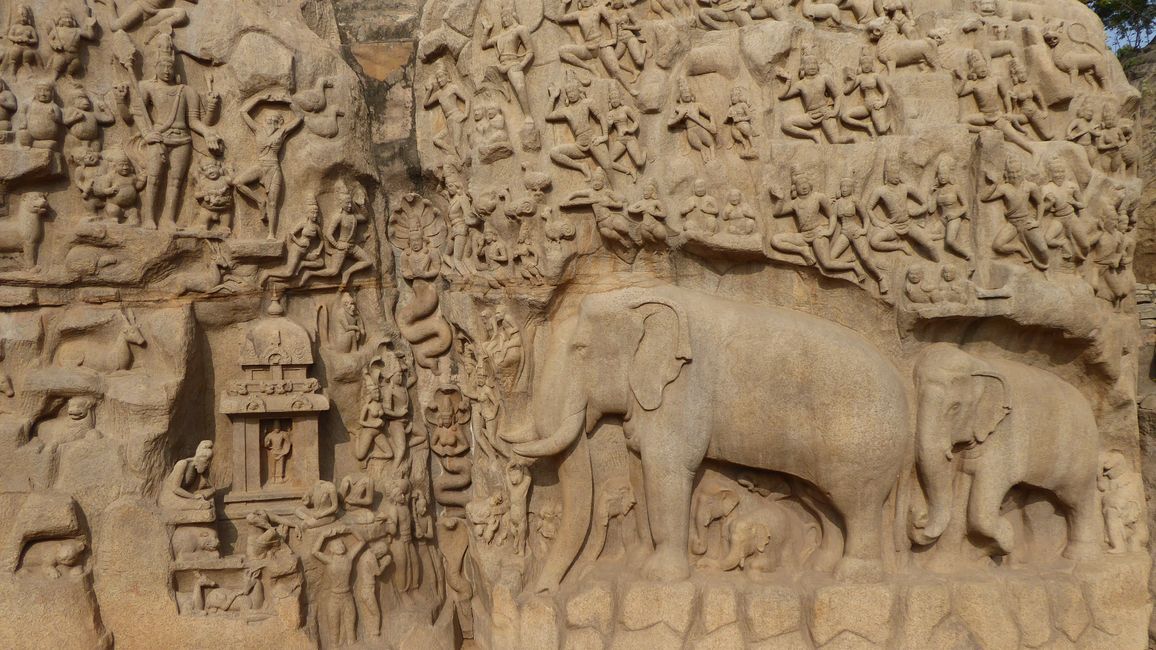
Finally, one destination remained for Don Curry: the coastal temple that he had already seen the day before but couldn't reach. In fact, the temple no longer serves any religious purposes but is accessible by paying a hefty admission fee of €8 as part of the UNESCO World Heritage site. It was the last major structure of the Pallavas in Mamallapuram. Shortly after its construction, the dynasty lost its power and the place lost any significance until the architectural jewels were rediscovered in the early 20th century.

A day with unusually much physical activity lay behind Don Curry: from climbing St. Thomas Mount to wandering among the Pallava treasures. With a healthy appetite, he looked forward to dinner, even if he didn't expect much from the restaurant after his breakfast experiences. But in the evening, the chef apparently wanted to show what he was really capable of: a good lemongrass soup and a delicious fish curry, together with a large beer and an Indian whisky, which according to the waiter carried the memorable brand name 'Whisky', filled Don Curry with deep satisfaction. Traveling can simply be wonderful...
Subscribe to Newsletter
Answer
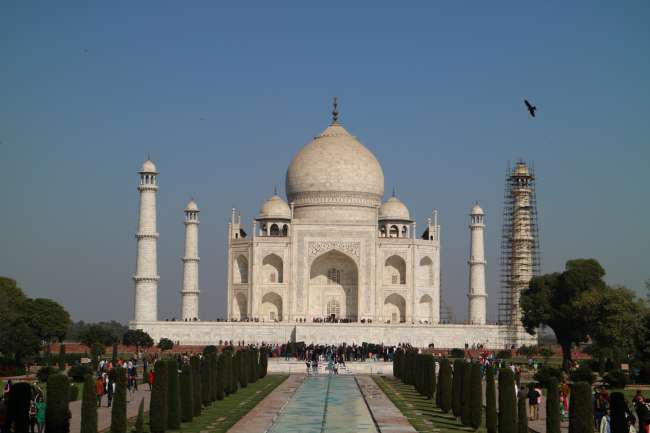
Travel reports India

